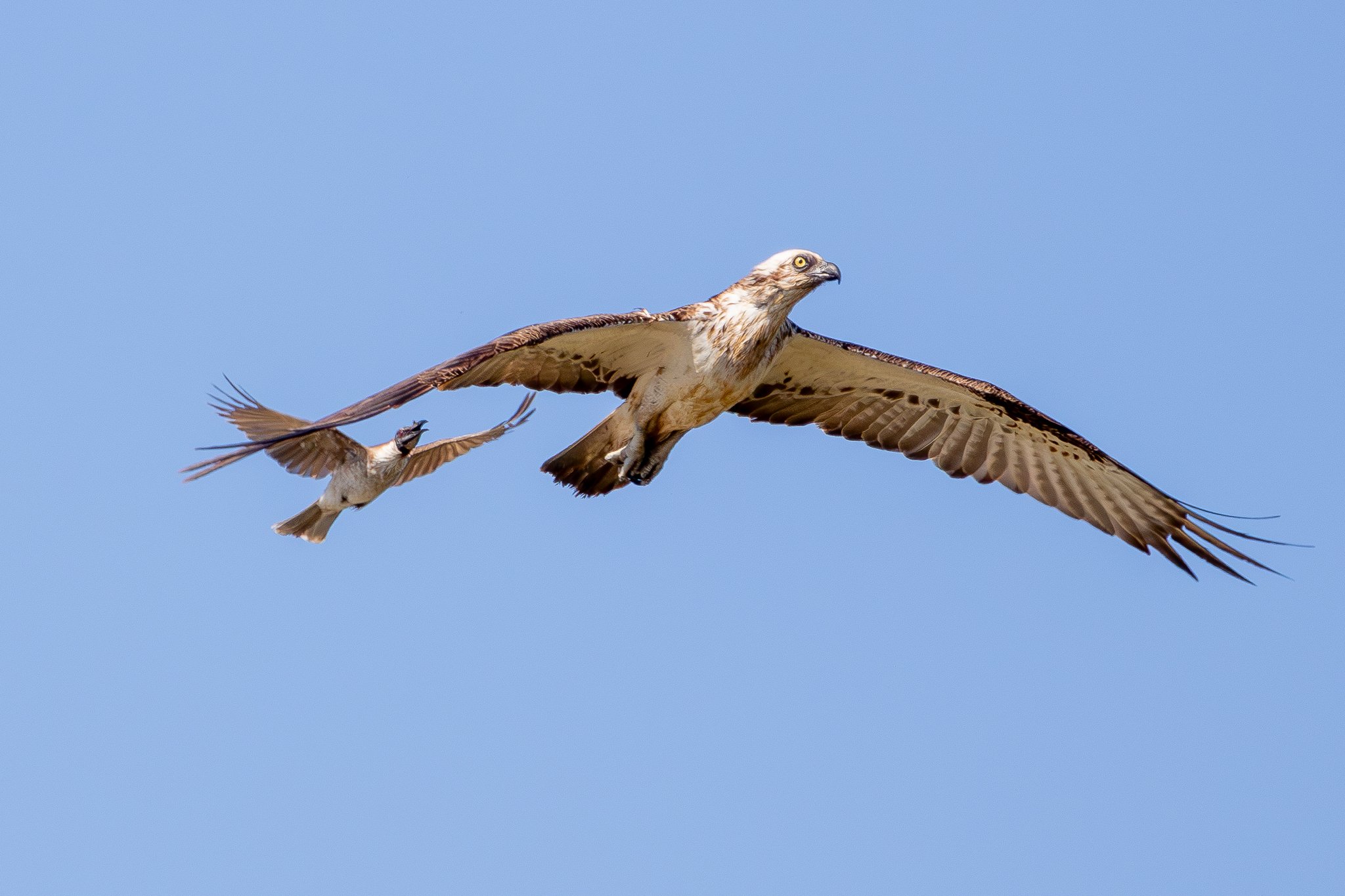Northern Rivers NSW
The north-east corner of New South Wales is defined by three large rivers, the Clarence, Richmond, and Tweed. They rise from volcanic mountain peaks, flow through fertile flood plains to coastal lagoons and swamps, and provide a wide variety of bird habitats.
Link to map and birdlist “Birds of Byron Shire”
Photo: The Beach Stone-curlew is more common on beaches and mudflats further north but a few individuals are seen in the Northern Rivers area; classified as Critically Endangered in NSW. Favourite food: Crabs!
The White-cheeked Honeyeater can be told from the similar New Holland Honeyeater by its fan-like white cheeks and the lack of a white ring around the eye. White-cheeked Honeyeaters prefer the denser coastal bush, sallying for insects from a prominent perch.
Welcome Swallows are numerous in Northern Rivers coastal lagoons, taking insects on the wing. They are seen throughout the region in a wide range of habitats including forests and grassland.
An inhabitant of waterside reed beds, this Golden Cisticola shines in the last rays of the sun at Tallow Creek Lagoon in Suffolk Park. An insect eating bird.
A male Red-backed Fairy-wren in its distinctive plumage. This contrasts with the brown/buff colour of the female, which has very similar to the attire of the other female Fairy-wren species. Found in tall grass across savanahs, woodlands, and adjoining wetlands.
The Brown Honeyeater is common in many habitats across northern Australia but avoids the taller eucalypt forests. Its long bill is well adapted for its diet of nectar.
A total of seventy five Wandering Whistling-Ducks invade a creek near Pottsville. The Northern Rivers is about as far south as these northerners travel.
The reed beds are home to a variety of finches: Red-browed Finches, Double-barred Finches and this Chestnut-breasted Mannikin. Like other finches the Chestnut-breasted Mannikin’s stout bill is well adapted for its diet of seeds, especially the grass seeds.
White-breasted Woodswallows often locate to wooded habitats near water. They forage on the wing for insects but also take nectar. They are usually seen in groups up to 20 birds; sometimes up to 200.
The mournful call of the Little Grassbird is common across the wetlands of the Northern Rivers. Usually heard and not seen, the Little Grassbird hides in long grasses and reed-beds.
The male Mistletoebird wearing its spectacular red, white and black livery. Mistletoebirds feed on fruit and nectar and play an important role in dispersal of mistletoe seeds.
The Brown Thornbill, a stalwart of denser bush and thickets. Here gleaning for insects in the middle branches of a medium sized tree.
The Eastern Osprey doesn’t appear to like being tail-gated by an agitated Noisy Friarbird. But the Friarbird may well be protecting its young from the much larger Osprey.
Found alongside Welcome Swallows and Fairy Martins is the Tree Martin. The prefer to nest in larger trees and also crevices of bridges and man made constructions.
A Little Pied Cormorant takes a break to dry out in the sun. Little Pied Cormorants are found in coastal and inland waterways, feeding on fish, and invertebrates, or reputedly their favourite food: Yabbies! (Yabbies are a small fresh water crayfish)
A Darter drys its wings. Darters can stay under water for an extended time allowing them to stalk and feed on fish. Darters prefer calmer waters, generally avoiding coastal lagoons and river mouths.
The Wandering Tattler is so named because it makes land fall in far flung places across the Pacific Ocean during its annual migration from Alaska to South America. It makes occasional visits to the Northern Rivers, here seen on the rocks at Broken Head.
The Figbird feeds on fruit and insects, preferring the tree’s higher reaches. They are found wherever there are fruiting trees. This female is feeding on the fruit of the Bangalow Palm, native tree to the Northern Rivers area.
A Spotless Crake shuttles past at the Byron Bay Wetlands. Another shy inhabitant of the wetlands, the Spotless Crake stays close the shelter of reed beds.
The Noisy Pitta, photographed in the depths of a Byron Bay rainforest. Pittas are seen in tropical rainforests from Africa to China. Australia has four species of Pitta.
Another rainforest bird, the Pale-yellow Robin, at Nightcaps National Park on the Big Scrub Trail. The Big Scrub Trail is a tiny remnant of what was once Australia’s largest sub-tropical rainforest, extending from Casino and Lismore to Byron Bay.
Large numbers of Scarlet Honeyeaters feed on blossom in a coastal Malaleuca forest. A colourful bird with a tinkling like song.
A Peregrine Falcon takes pause long after dusk on a Byron Bay beach. The Peregrine Falcon is the ultimate hunter, capable of dive speed up to 300 km per hour.
Leaden Flycatchers make bowl shaped nests disguised with flakes of bark and lichens, bound together with spider webs. The nest this Leaden Flycatcher was building with its mate had just been washed away by torrential rain at Tallow Creek Lagoon.
The Silvereye, another common bird in the Northern Rivers region, usually seen feeding in small flocks to six to ten birds.
A juvenile Forest Kingfisher, distinguished by its “buff headlights” which will become white when an adult. Here sitting close to a waterway in the Byron Bay Wetlands.
An Eastern Spinebill feeds in a Byron Bay hinterland garden. Spinebills “hover” hummingbird like in front of flowers, extracting nectar with their long bills.
A Logrunner calls in the depths of the sub-tropical rainforest. Photographed a Mount Nardi in the Nightcap National Park.
The Bar-shoiuldered Dove is often heard in Byron bay making its characteristic “cuckoo - oo cuckoo - oo” call.




























